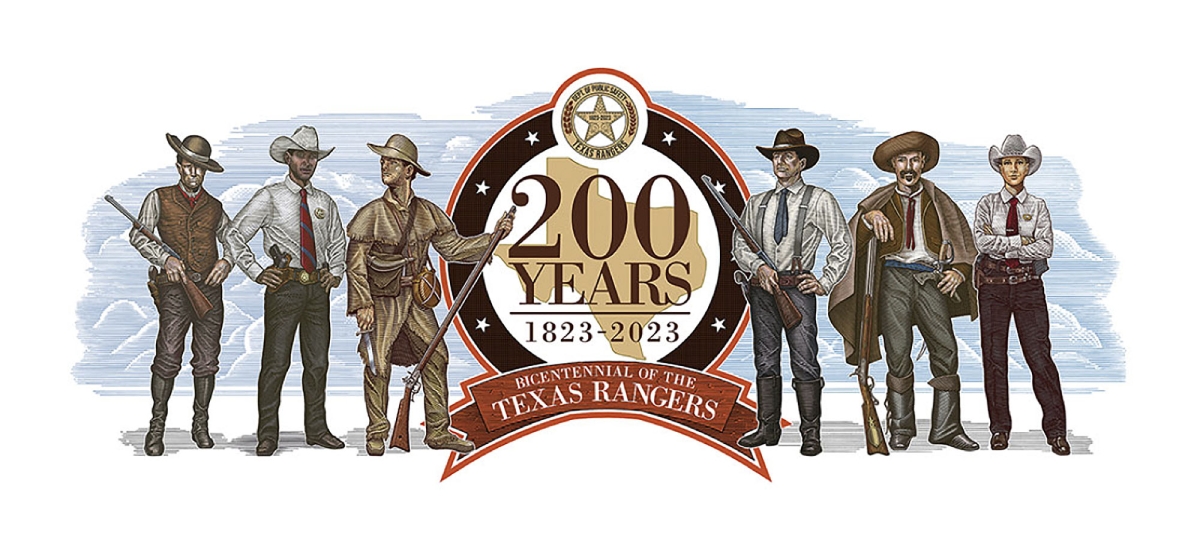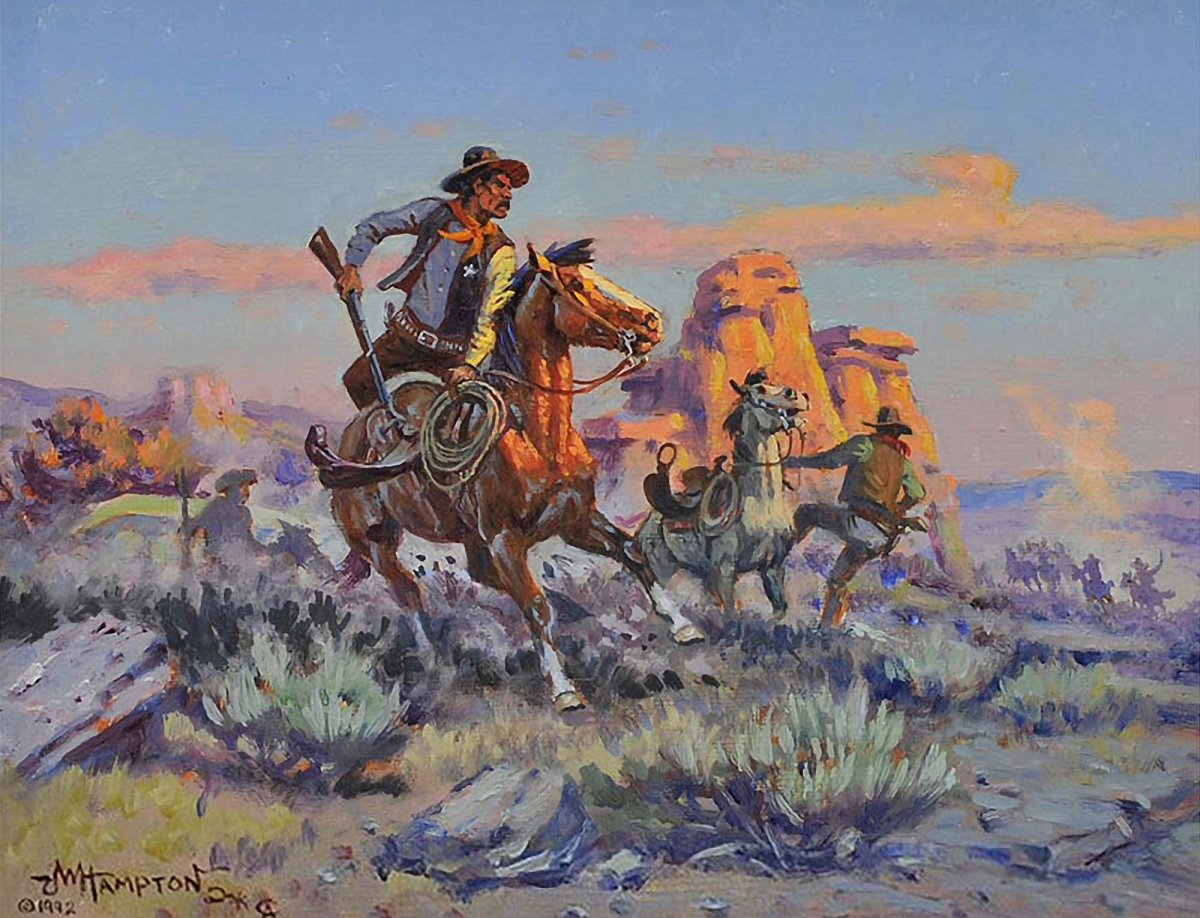1823-2023: 200 years of Texas Rangers
The year 2023 has marked the bicentennial of the institution of the corps of the Texas Rangers: one of the most famous and celebrated police forces in the United States history
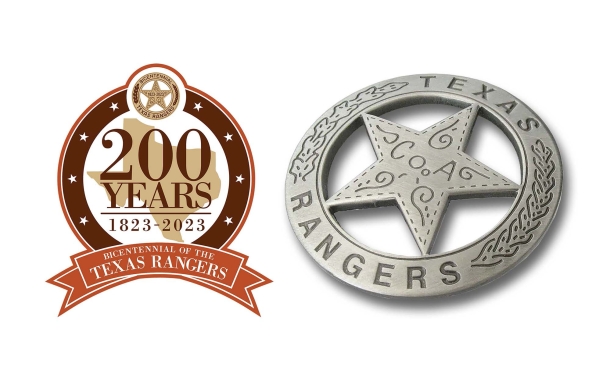
The Texas Rangers rich history starts in 1823. The origin of the Texas Rangers can be traced to a period when Texas was still a part of Mexico, and the region was facing various challenges related to lawlessness, hostile Native American tribes, and the need for frontier defense.
In 1823, Stephen F. Austin, who is often considered the "Father of Texas," formed a group of volunteers known as the "Ranging Company of Mounted Volunteers". The purpose of this group was to protect the Anglo-American settlers from raids by Native American tribes and to maintain order in the region.
The success of this group of volunteers was such that in 1835led to the establishment of the Texas Rangers, as a more formal law enforcement organization. Initially, the Rangers operated under the jurisdiction of the Republic of Texas and later became a part of the state of Texas when it joined the United States in 1845.
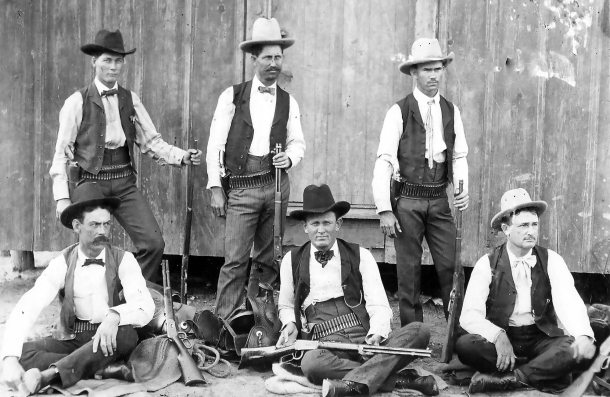
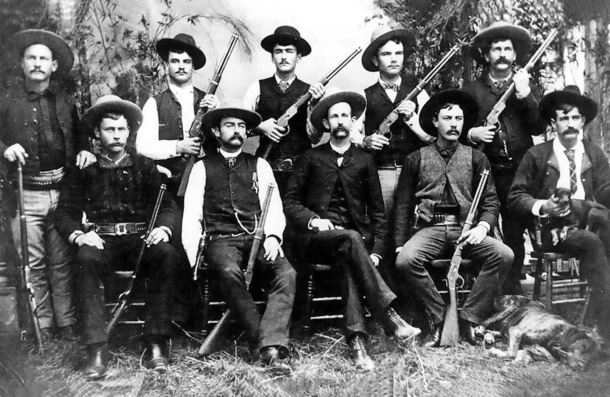
During the early years, the Texas Rangers played a crucial role in defending the frontier, maintaining law and order, and protecting the settlers from various threats. They were involved in numerous conflicts, including the Texas Revolution (1835-1836), the Mexican-American War (1846-1848), and the American Civil War (1861-1865).
The Rangers gained a reputation for their toughness, resourcefulness, and expert horsemanship. They were known for their distinctive appearance, often wearing a combination of traditional western clothing, including Stetson hats and leather boots.
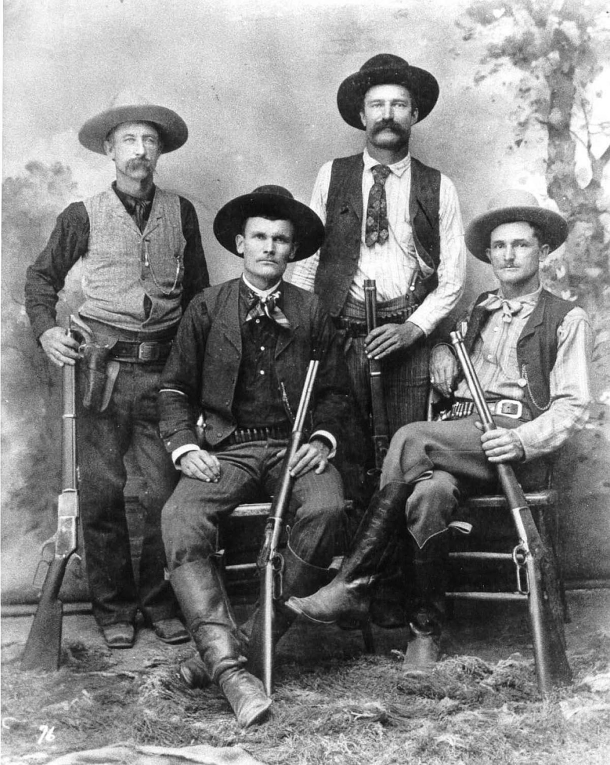
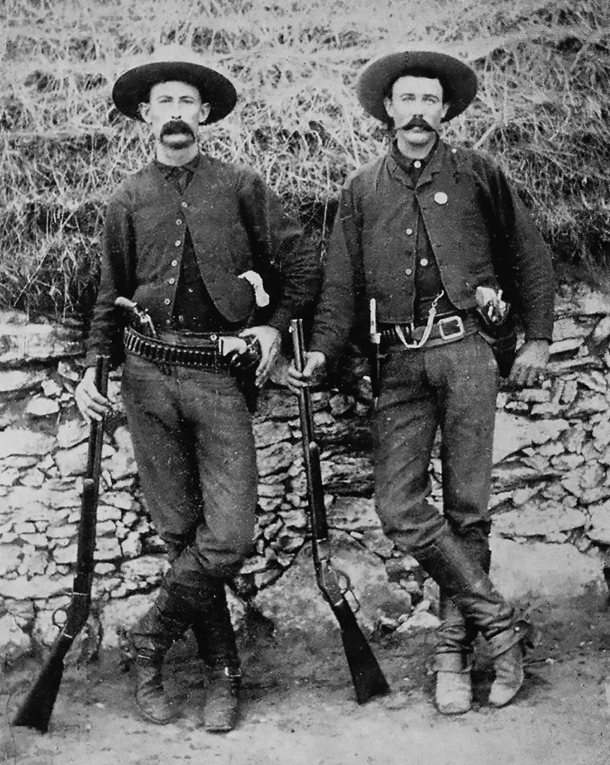
The story of the Texas Rangers is filled with tales of bravery, adventure, and dedication to upholding the law in the vast and often dangerous frontier of Texas. Here are some notable events and stories that highlight their history:
Indian Wars
One of the earliest challenges faced by the Texas Rangers was dealing with Native American tribes in the region. They engaged in conflicts with tribes such as the Comanches and Apaches, working to protect settlements and keep the peace on the frontier.
Battle of the Alamo
During the Texas Revolution in 1836, a group of Texas defenders, including legendary figures like Davy Crockett and Jim Bowie, held the Alamo Mission in San Antonio against the Mexican army. Despite their ultimate defeat, the bravery and sacrifice of the defenders became a symbol of Texan resistance and resilience.
Mexican-American War
The Texas Rangers played a significant role in the Mexican-American War of 1846-1848. They fought alongside the U.S. Army in battles like the Battle of Monterrey and the Battle of Buena Vista, showcasing their skills as skilled fighters and scouts.
Border Conflicts
The Texas Rangers were heavily involved in maintaining order along the Mexican border during the 19th and early 20th centuries. They dealt with issues such as cattle rustling, smuggling, and banditry, working to protect the lives and property of the settlers in the region.
Pursuit of Outlaws
The Texas Rangers gained fame for their pursuit and capture of notorious outlaws. In the 1870s, they tracked down and apprehended the infamous train robber Sam Bass, showcasing their expertise in investigation and law enforcement.
The Bandit War
In the early 20th century, the Texas Rangers were involved in a prolonged conflict known as the Bandit War. It was a series of battles and clashes with Mexican raiders and outlaws along the border, particularly during the Mexican Revolution. This period tested the Rangers' abilities and resolve.
Modern Era
In the modern era, the Texas Rangers have continued to serve as a respected law enforcement agency. They have taken on various roles, including investigating major crimes, combating organized crime and drug trafficking, and supporting local law enforcement agencies across the state.
Throughout their history, the Texas Rangers have embodied the spirit of the Texas frontier, displaying courage, resilience, and a commitment to justice. They have become an enduring symbol of Texas pride and are celebrated in numerous books, films, and cultural representations that have contributed to their legendary status.
By the end of 1800s, the Texas Rangers evolved into a professional law enforcement agency, dealing with a wide range of criminal activities, including cattle rustling, banditry, and border disputes. They were known for their bravery, skill, and determination in fighting crime and keeping the peace in a state that was still largely unsettled.
Today, the Texas Rangers are a division of the Texas Department of Public Safety. They serve as a statewide law enforcement agency with responsibilities that include major crime investigations, border security, and support for local law enforcement agencies.
The legacy of the Texas Rangers remains an integral part of Texas history and culture. Their image has been romanticized in literature, movies, and popular culture: they are an iconic symbol of Texas and a source of pride for Texans.

Colt Paterson 1836 (Uberti replica)
The Colt Paterson 1836 was a significant weapon in the early history of the Texas Rangers, as it was the first revolver to be used in service.
The Texas Rangers were formed in 1823, and they played a critical role in the settlement and development of Texas, facing many challenges, including hostile Indian tribes, bandits, and outlaws. To combat these threats, the Rangers needed reliable and effective weapons.
In 1836, Samuel Colt introduced the Colt Paterson, which was the first pistol to use a revolving cylinder. With a six-shot cylinder, the Paterson was a significant improvement over earlier pistols, which were typically single-shot, muzzle-loading weapons.
The Texas Rangers quickly recognized the advantages of the Colt Paterson and began to use it in the field. The Colt Paterson became so closely associated with the Texas Rangers that it is often referred to as the "Texas Paterson." The Paterson was used by the Rangers throughout the 1830s and into the 1840s, when it was eventually replaced by newer and more advanced firearms.

Colt Walker 1847 (Uberti replica)
Following the success of the Colt Paterson 1836 revolver, the Colt Walker 1847 was the other and most significant weapon in the first 25 years of the Texas Rangers history. The Colt Walker was a massive revolver that was designed for combat use, and it was introduced in 1847.
The Colt Paterson repeating revolver had been a significant improvement in respect of the existing single shot pistols, but the pistol was fragile, and its .36 caliber not powerful enough to face the enemies that the Texas Rangers had to fight with.
The Colt Walker was developed specifically to meet these needs. It was designed by Samuel Colt and Captain Samuel H. Walker, who serviced during the Mexican-American War and was a member of the Texas Rangers himself.
The Colt Walker was a massive revolver: it had a six-shot cylinder, .44 caliber, for an overall weight of over four pounds. The Colt Walker quickly gained a reputation as one of the most powerful handguns of its time, it proved to be highly effective against Indians and outlaws, and it was used during the 1846-1848 Mexican-American War also.
Texas Rangers classic guns of the 19th Century
(just a few...)

Colt 1836 Paterson
Uberti replica (discontinued)

Colt 1847 Walker

Colt 1848 Dragoon

Colt 1860 Army

Colt 1860 Army Richards

Colt 1873 Single Action

Remington 1875

Smith e Wesson 1875 Schofield

Texas Rangers, 1823-2023

Texas Rangers, 1823-2023

Sharps 1874 and Winchester 1886 rifles


Stephen Fuller Austin (1793-1836)
Stephen F. Austin, often referred to as the "Father of Texas," played a pivotal role in the establishment and early history of Texas. He is known for leading the Anglo-American colonization of Texas and advocating for its independence from Mexico.
Stephen F. Austin was born on November 3, 1793, in Virginia. He grew up in a prominent family and received a good education. After his father, Moses Austin, obtained a land grant in Spanish Texas, Stephen took over his father's plan to establish a colony in the region after Moses' death in 1821.
Austin traveled to Texas and worked diligently to fulfill his father's vision. He negotiated with Spanish and Mexican officials to secure land grants for his colony and developed a plan for settling Anglo-American families in the area. His efforts resulted in the successful establishment of the first legal Anglo-American colony in Texas.
During this time, Austin recognized the need for protection and security for the settlers in the face of various challenges, including Native American raids and lawlessness. In response, he formed the Ranging Company of Mounted Volunteers in 1823. This group consisted of volunteers who were willing to serve as a mounted militia to defend the settlers and maintain order in the region.
The Ranging Company of Mounted Volunteers, also known as Austin's Rangers, served as the precursor to the famed Texas Rangers. Although not an official law enforcement organization at that time, they played a crucial role in protecting the early Anglo-American settlements from Native American attacks and providing a sense of security to the colonists.
Austin's Rangers patrolled the frontier, conducted scouting missions, and responded to threats and emergencies. They were skilled horsemen and marksmen, known for their ability to navigate the challenging terrain and engage in combat when necessary. Their presence helped to deter potential aggressors and maintain peace on the frontier.
The Ranging Company of Mounted Volunteers was a volunteer force, and the members provided their own horses and equipment. They served under the authority of Stephen F. Austin and operated with a sense of duty and dedication to the community.
Austin's Rangers and their efforts were instrumental in establishing stability and security in the early days of Texas colonization. Their legacy paved the way for the future formation of the Texas Rangers, who would continue to serve as a renowned law enforcement agency in the state.
Stephen F. Austin's leadership and his establishment of the Ranging Company of Mounted Volunteers contributed significantly to the development of Texas and the preservation of its Anglo-American settlements during a critical period in its history.
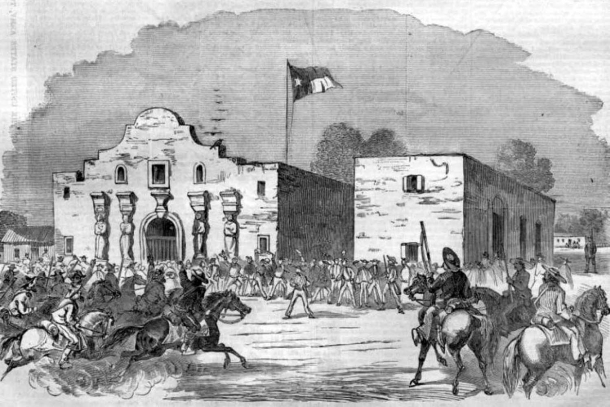
Battle of the Alamo (1836)
During the Texas Revolution, the Texas Rangers played a significant role as a military force defending the Republic of Texas against Mexican forces. The Rangers were a volunteer cavalry unit composed of Texan settlers who were experienced horsemen and skilled fighters. They were known for their bravery, resourcefulness, and expertise in guerilla warfare tactics.
The Texas Rangers were initially established in 1823 as a law enforcement organization by Stephen F. Austin, the "Father of Texas." However, during the Texas Revolution, their role shifted to that of a military force. The Rangers served as scouts, messengers, and fighters, conducting both offensive and defensive operations against Mexican forces.
Under the command of famous Texan leaders such as Sam Houston, William B. Travis, and James Bowie, the Texas Rangers were involved in several notable engagements during the revolution. One of the most famous battles in which the Rangers participated was the Battle of Gonzales in October 1835. This skirmish marked the beginning of armed conflict between Texan settlers and Mexican forces and is often referred to as the "Lexington of Texas."
During the siege of the Alamo in 1836, a small contingent of Rangers, led by William B. Travis, James Bowie, and Davy Crockett, fought alongside other Texan defenders. The Rangers displayed extraordinary bravery and fought valiantly but were ultimately overwhelmed by Mexican General Santa Anna's forces, resulting in the fall of the Alamo.
Another notable event involving the Texas Rangers during the revolution was the Battle of San Jacinto in April 1836. Led by General Sam Houston, the Texan army, which included a contingent of Rangers, launched a surprise attack on the Mexican forces led by Santa Anna. The battle resulted in a decisive Texan victory and led to the independence of the Republic of Texas.
The Texas Rangers' contributions during the Texas Revolution were crucial in securing Texas' independence. Their bravery, combat skills, and determination played a significant role in shaping the history of the region and the formation of the Republic of Texas.

Comanche Indians
During the Indian Wars, which spanned several decades from the early 19th century to the late 19th century, the Texas Rangers played a significant role in the conflicts between Native American tribes and settlers in the frontier regions of Texas. The Rangers were instrumental in defending settlements, conducting campaigns against Native American tribes, and maintaining order on the frontier.
The Texas Rangers were called upon to address conflicts with various Native American tribes, including the Comanche, Apache, Kiowa, and others. These tribes fiercely resisted encroachment on their lands and engaged in raids on settlements, cattle rustling, and other acts of violence. As a result, the Rangers were tasked with protecting the settlers, pursuing raiding parties, and establishing peace treaties with Native American leaders.
The Rangers' tactics during the Indian Wars focused on mobility, guerilla warfare, and scouting. They operated in small, highly skilled units that could navigate the challenging terrain of the frontier and launch surprise attacks on Native American encampments. The Rangers employed their knowledge of tracking, horsemanship, and frontier survival to effectively counter the tactics of Native American tribes.
One notable figure from this period was Captain John Coffee "Jack" Hays, who was known for his leadership and strategic abilities. Hays and his Rangers became renowned for their success in confronting the Comanche and Apache tribes. Their expertise in mounted warfare and their use of the Colt revolver, a weapon that provided superior firepower, helped tip the balance in favor of the Rangers.
The Texas Rangers were also involved in several significant engagements during the Indian Wars. The Battle of Plum Creek in 1840, for example, saw a combined force of Rangers and militia defeat a large Comanche war party, resulting in a significant setback for the tribe. The Battle of Little Robe Creek in 1858 was another significant conflict where a Ranger force, under the command of Captain Sul Ross, engaged Comanche and Kiowa warriors.
Over time, the Texas Rangers' efforts, combined with the increasing presence of the U.S. Army, helped bring the Indian Wars in Texas to a conclusion. The signing of treaties and the establishment of reservations marked a shift in the relationship between Native American tribes and settlers.
It is important to note that the actions of the Texas Rangers during the Indian Wars were not without controversy. There were instances of excessive force, mistreatment of Native Americans, and clashes with tribes that were attempting to defend their ancestral lands. The conflicts during this period resulted in significant loss of life and had a lasting impact on Native American communities.
Nevertheless, the Texas Rangers' role in the Indian Wars represented a crucial aspect of frontier life in Texas. They served as a vital force in protecting settlers, maintaining order, and engaging in military campaigns against Native American tribes during a period of intense conflict and upheaval on the Texas frontier.
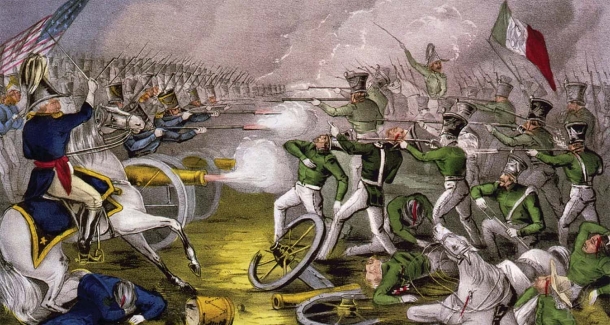
Mexican-American War (1846-1848)
During the Mexican-American War (1846-1848), the Texas Rangers played a prominent role as a cavalry force in the United States' military operations against Mexico. They were primarily responsible for scouting, reconnaissance, and conducting raids behind enemy lines. The experience and skills of the Texas Rangers were highly valued during this conflict.
Many former Texas Revolution veterans joined the Texas Rangers during the Mexican-American War. They brought their knowledge of guerilla warfare and frontier combat tactics, which proved to be valuable assets in the conflict. Under the command of experienced officers, the Rangers served as a mobile and versatile force, operating in the rugged and challenging terrain of the border region.
One of the most notable engagements involving the Texas Rangers during the Mexican-American War was the Battle of Monterrey in September 1846. The Rangers, under the leadership of Captain Samuel H. Walker, played a critical role in the capture of Monterrey, a strategically important city in northeastern Mexico. Their daring and skillful actions, combined with the efforts of other American forces, resulted in a decisive victory.
The Texas Rangers also participated in other key battles and campaigns during the war. They were involved in the Battle of Buena Vista in February 1847, where they fought alongside American forces under the command of General Zachary Taylor. The Rangers were instrumental in repelling Mexican attacks and contributing to the American victory.
The Rangers' expertise in scouting and reconnaissance proved invaluable throughout the conflict. They provided vital intelligence about enemy movements, positions, and strengths, enabling American commanders to make informed decisions. The Texas Rangers' ability to operate independently and adapt to the rugged conditions of the battlefield made them a valuable asset to the American forces.
The Texas Rangers' contributions during the Mexican-American War helped solidify their reputation as skilled fighters and capable soldiers. Their expertise in guerilla warfare and frontier combat tactics, combined with their fierce dedication, greatly influenced the outcome of battles and campaigns.
Following the end of the Mexican-American War with the signing of the Treaty of Guadalupe Hidalgo in 1848, the Texas Rangers continued to serve as a frontier law enforcement agency. They played a crucial role in maintaining order and protecting the borderlands, particularly in the face of various conflicts and tensions that persisted in the region.

American Civil War (1861-1865)
During the American Civil War (1861-1865), the Texas Rangers played a complex and multifaceted role. As Texas seceded from the Union and joined the Confederacy, many Rangers joined Confederate military units, while others remained in Texas to maintain law and order on the frontier.
Several famous Texas Ranger captains and officers from the pre-Civil War era went on to serve in prominent roles within the Confederate Army. For example, Lawrence Sullivan "Sul" Ross, who had gained fame for his leadership during the Indian Wars, became a Confederate officer and eventually rose to the rank of brigadier general. John "Rip" Ford, another renowned Ranger captain, also joined the Confederate Army and played a significant role in various military campaigns.
The Texas Rangers, under the command of the Confederacy, were primarily responsible for defending the Texas frontier against incursions from Union forces and Native American tribes who sought to take advantage of the absence of regular federal troops. They patrolled the border, guarded against Union sympathizers, and engaged in skirmishes with Union forces when necessary.
The Rangers also conducted raids into Union-held territories in an attempt to disrupt enemy operations and secure supplies for the Confederate cause. They participated in battles such as the Battle of Galveston in January 1863, where a combined force of Rangers, Confederate troops, and militia successfully recaptured the city from Union control.
However, it is important to note that not all Texas Rangers supported the Confederacy. Some Rangers, particularly those who were sympathetic to the Union or had reservations about secession, either resigned or refrained from actively participating in the war. They instead focused on maintaining order within Texas and protecting settlers from raids by Native American tribes.
The Civil War severely impacted the operations of the Texas Rangers. The lack of resources, the diversion of manpower to the Confederate Army, and the overall disruption caused by the war limited their effectiveness as a law enforcement agency. Additionally, the absence of federal troops in the region left a security vacuum that the Rangers struggled to fill.
Overall, the role of the Texas Rangers during the American Civil War varied depending on the individual Rangers and their affiliations. While some joined the Confederate cause and participated in military operations, others focused on maintaining order within Texas during a turbulent time in the state's history.
The Civil War significantly impacted the operations and structure of the Rangers, and after the war, the Texas Rangers underwent a period of reorganization and reestablishment. Many former Confederate veterans returned to their roles as Rangers, seeking to restore law and order in Texas, which was grappling with the challenges of Reconstruction. The Rangers faced new threats and conflicts during this period, including clashes with outlaws, cattle rustlers, and Mexican raiders along the border.
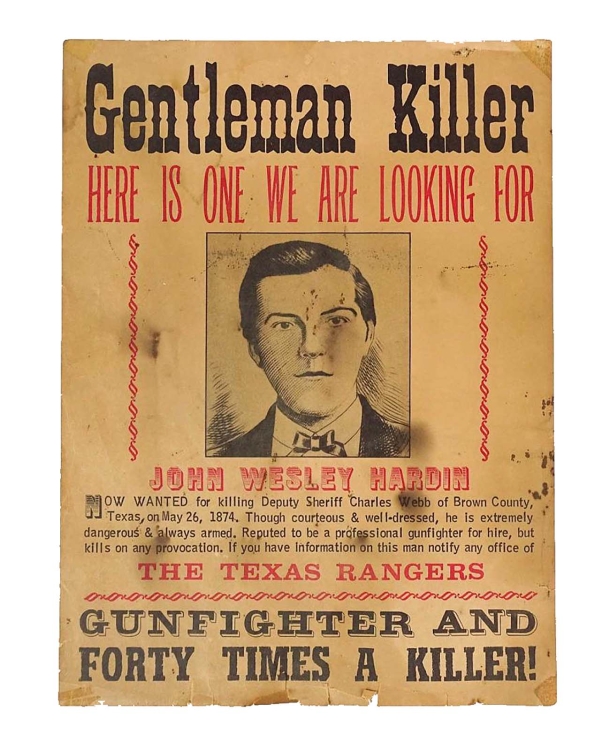
During the period of 1870-1880, the Texas Rangers played a significant role in the pursuit of outlaws and the maintenance of law and order in the rapidly expanding frontier of Texas. This era marked a time of increased criminal activity, including cattle rustling, banditry, and violence, which necessitated the intervention of the Texas Rangers.
The Rangers faced numerous challenges during this period. The frontier was characterized by vast and rugged terrain, making it an ideal hiding place for outlaws. Additionally, the vast distances and limited resources meant that the Rangers often had to operate with minimal support.
One notorious outlaw during this time was Sam Bass, who became a symbol of the outlaw culture in Texas. Bass was a stagecoach and train robber who terrorized the region in the early 1870s. The Texas Rangers, led by Captain Junius Peak, actively pursued Bass and his gang, and their efforts culminated in the famous Battle of Round Rock in July 1878. During the confrontation, Bass was mortally wounded, and the remaining members of his gang were captured or killed.
Another significant event during this period was the Mason County War, which erupted in 1875. The conflict, rooted in cattle rustling and land disputes, escalated into a violent feud between various factions. The Texas Rangers were called in to restore order and bring the perpetrators to justice. Under the leadership of Captain Leander H. McNelly, the Rangers took decisive action, arresting several individuals involved in the violence and restoring peace to the area.
The Rangers were known for their relentless determination and fearlessness in the face of danger. The pursuit of outlaws during this era required the Texas Rangers to adapt and employ various strategies. They utilized their expertise in tracking, scouting, and marksmanship to locate and apprehend criminals.
However, there were instances where the line between law enforcement and vigilantism blurred, and the Rangers faced accusations of excessive force and extrajudicial killings. The nature of their work, combined with the challenging circumstances of the frontier, sometimes led to extreme actions.
Despite these controversies, the efforts of the Texas Rangers in pursuing outlaws and maintaining law and order had a profound impact on the development of Texas. Their actions helped deter criminal activity, safeguarded communities, and contributed to the overall stability of the frontier.
The era of the 1870s and 1880s marked a pivotal time for the Texas Rangers in their ongoing role as law enforcement officers. The pursuit of outlaws during this period showcased their resilience, resourcefulness, and commitment to upholding the law in the face of challenging circumstances on the Texas frontier.
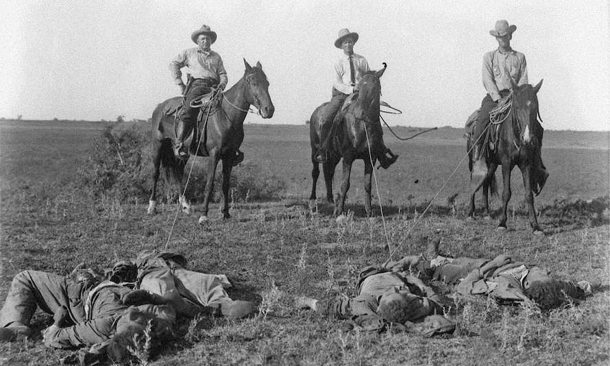
The Bandit War, also known as the Border Troubles or Border Wars, occurred along the Texas-Mexico border. It was a result of the Mexican Revolution spilling over into the border region, creating a chaotic and dangerous environment.
The Bandit War lasted from approximately 1910 to 1919 and was marked by intense violence, smuggling, and raids by Mexican bandits, leading to the deployment of the Texas Rangers to combat the criminal activities. Mexican bandits, including revolutionaries, outlaws, and horse thieves, frequently crossed the border to raid settlements, steal livestock, and engage in acts of violence.
To address this lawlessness and protect the communities along the border, the Texas Rangers were tasked with patrolling the region, maintaining order, and apprehending or eliminating the bandits. They operated in harsh and hostile environments, often engaging in pitched battles and gunfights with the outlaws.
One of the most notable figures during this time was Captain John R. Hughes, a legendary Texas Ranger who led efforts against the bandits along the border. Hughes and his Rangers conducted numerous expeditions and patrols, successfully disrupting the activities of the bandit gangs. Hughes' leadership and tactical acumen played a significant role in bringing stability to the region.
The Texas Rangers employed a variety of tactics during the Bandit War, including surveillance, intelligence gathering, and mounted patrols. They relied on their extensive knowledge of the terrain, tracking skills, and marksmanship to pursue and apprehend or eliminate the bandits. Additionally, the Rangers coordinated closely with federal authorities, such as the U.S. Army and the U.S. Border Patrol, to enhance their effectiveness in combating the criminal activities along the border.
The efforts of the Texas Rangers, along with the deployment of federal troops, eventually led to a decline in the bandit activities. The end of the Mexican Revolution and improved cooperation between the United States and Mexico in border security also contributed to a decrease in violence.
The Bandit War was a challenging and dangerous period for the Texas Rangers, requiring them to operate in hostile and unpredictable conditions. While their actions were often effective in suppressing banditry, there were instances of controversy and accusations of excessive force. The border conflicts also highlighted the difficulties in enforcing the law and maintaining order in a fluid and complex border region.
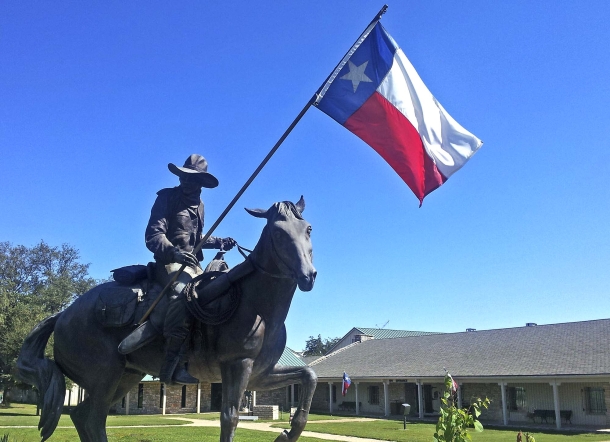
In the 20th century the Texas Rangers expanded their jurisdiction beyond the traditional roles of pursuing outlaws and maintaining order on the frontier. They became involved in various law enforcement activities, such as investigating major crimes, conducting undercover operations, and assisting local law enforcement agencies with complex cases.
One significant development in the 20th century was the professionalization of the Texas Rangers. The organization implemented stricter requirements for recruitment, including educational qualifications and rigorous training programs. This emphasis on professionalism helped enhance the Rangers' reputation and their ability to handle a wide range of law enforcement challenges.
The Texas Rangers were involved in several high-profile cases and investigations throughout the 20th century. In 1935 they were formally recognized as a division within the Texas Department of Public Safety (DPS), which provided them with additional resources and support. The Rangers worked alongside other divisions of the DPS, such as the Highway Patrol and the Criminal Investigations Division, to combat crime and ensure public safety.
They played a role in the investigation of the infamous bank robbers like Bonnie and Clyde, providing key intelligence and assistance to law enforcement agencies. The Rangers were also involved in the pursuit and capture of numerous other criminals, including murderers, kidnappers, and organized crime figures.
In addition to their law enforcement duties, the Texas Rangers played a crucial role in disaster response and maintaining public safety during times of crisis. They provided assistance during natural disasters, riots, and other emergencies, earning the respect and gratitude of the communities they served.
In the latter half of the 20th century, the Texas Rangers underwent significant organizational changes, evolving to meet the challenges of modern law enforcement. They have embraced new technologies, such as forensic science and advanced investigative techniques, to enhance their effectiveness in solving crimes. The Rangers also maintain a strong presence along the Texas-Mexico border, collaborating with federal agencies to combat drug smuggling, human trafficking, and other cross-border crimes.
The Texas Rangers' reputation as skilled law enforcement officers has made them an iconic symbol of Texas and their legacy has been celebrated through popular culture, including books, movies, and television shows.
Overall, the Texas Rangers transformed into a modern law enforcement agency while upholding their traditions and maintaining their reputation as skilled investigators and enforcers of the law. Their dedication, professionalism, and commitment to justice have made them an integral part of Texas law enforcement history.
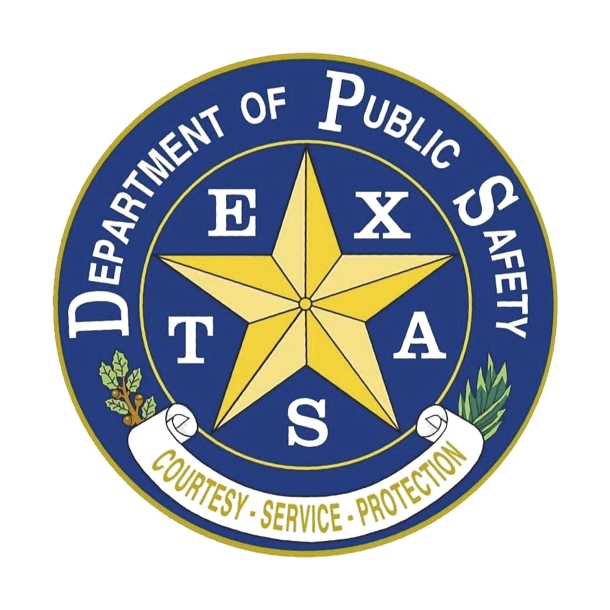
Nowadays the Texas Rangers continue to serve as a law enforcement agency within the Texas Department of Public Safety (DPS). They are one of the oldest and most respected state law enforcement agencies in the United States.
Today, the Texas Rangers have a broad range of responsibilities. They are primarily involved in criminal investigations, handling major crimes such as murder, organized crime, public corruption, and complex cases that cross jurisdictional boundaries. The Texas Rangers work closely with local, state, and federal law enforcement agencies to coordinate efforts and ensure public safety. They often assist smaller or overwhelmed law enforcement agencies in rural areas with limited resources. The Rangers also have a prominent role in protecting the Texas-Mexico border, addressing issues such as drug trafficking, human smuggling, and border-related crimes.
The Texas Rangers are known for their distinctive attire, including the iconic Stetson hat and the white cowboy-style uniforms. Their unique uniform is a symbol of their legacy and historical connection to the state's frontier heritage.
To become a Texas Ranger, individuals must first serve as law enforcement officers within the DPS for a period of time, gaining experience and demonstrating exceptional skills and dedication. Those who meet the rigorous requirements can then apply to join the Texas Rangers. The selection process involves comprehensive background checks, physical fitness tests, interviews, and specialized training.
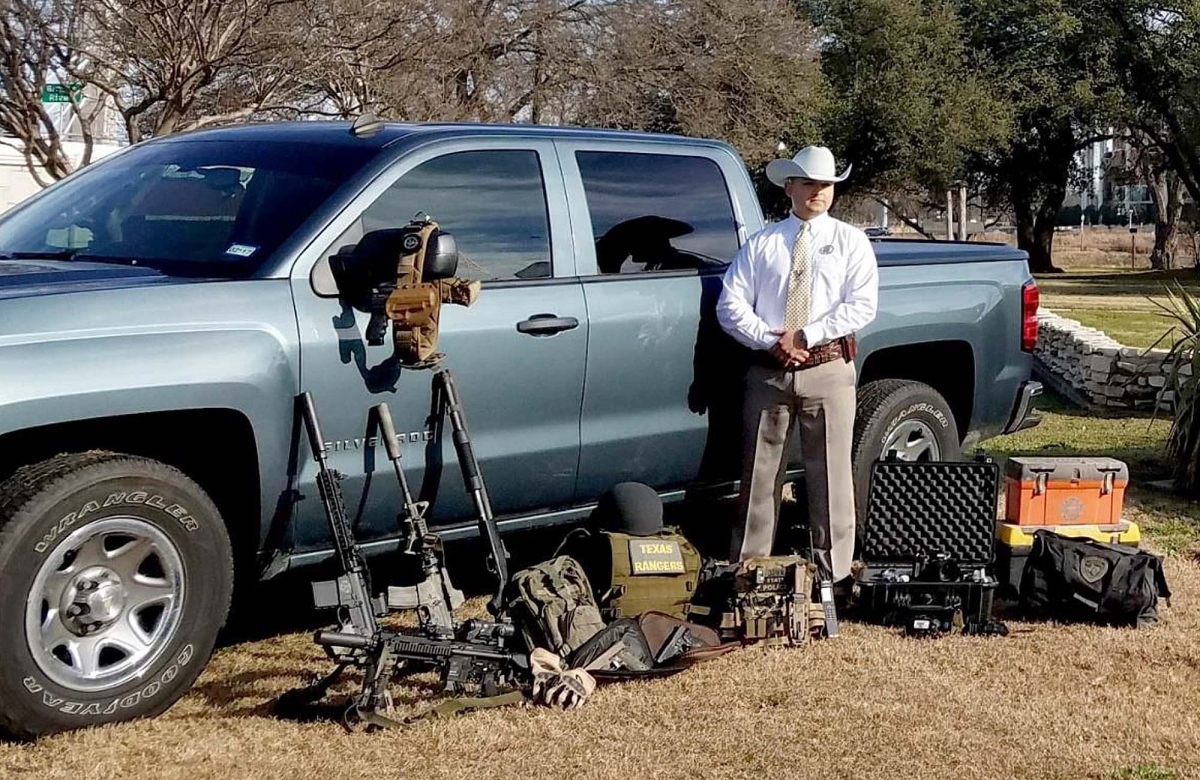
Lot of things changed in Texas Rangers modern equipment...
Photo Credit: Texas Rangers Hall of Fame and Museum
